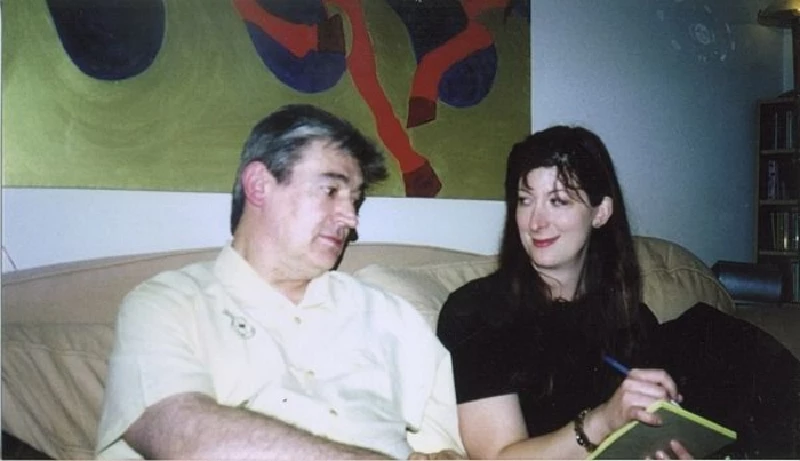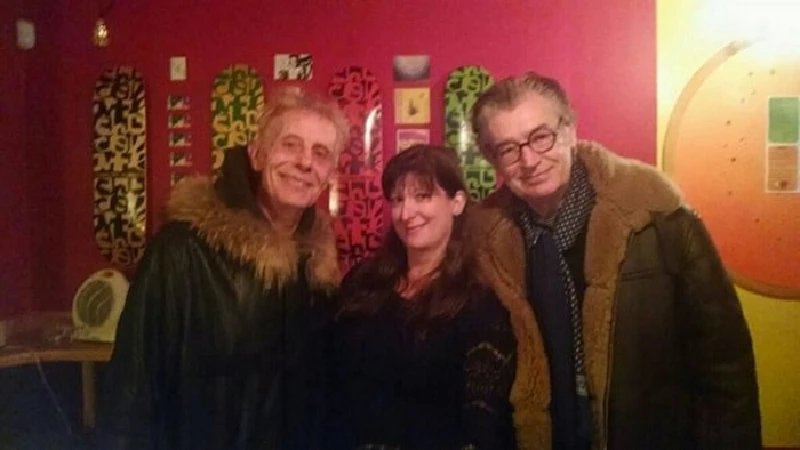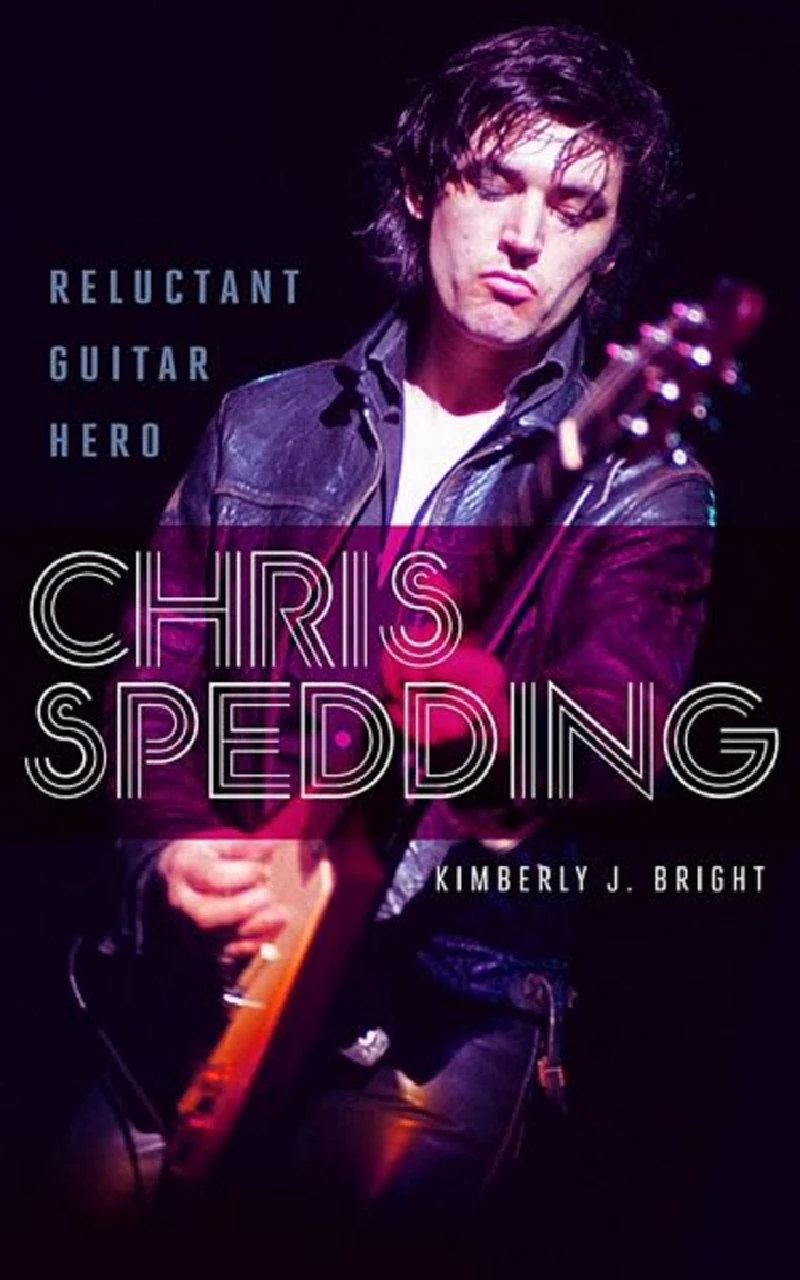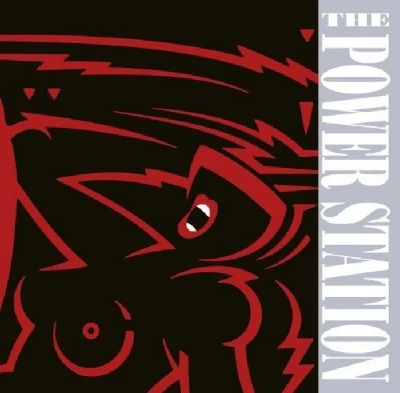Kimberly Bright - Interview
by John Clarkson
published: 30 / 9 / 2016

intro
Kimberly Bright speaks to John Clarkson about her biography 'Chris Spedding: Reluctant Guitar Hero', which has just been reissued in a tenth anniversary revised edition, and the difficulties of self-publishing
Chris Spedding will always be remembered for his 1975 UK #14 hit, ‘Motor Bikin’’, which gave him his only chart success. It saw him, dressed in leathers and hair quiffed, make a memorable and still regularly repeated appearance on ‘Top of the Pops’. While never a household name, Spedding has been the musician’s choice of guitarist for over fifty years . As well as being a much in-demand session musician, he has had an almost equally lengthy career as a producer, and is a veteran solo artist, with 14 albums behind him. Over the course of his career, Spedding produced the Sex Pistols’ original demos for what became their ‘Never Mind the Bollocks’ album, recorded three albums with his eventual brother-in-law John Cale, appeared in the film and on the album of Paul McCartney’s ill-fated ‘Give My Regards to Broad Street’ and toured with both Roxy Music and Bryan Ferry. Indiana-based author Kimberly J. Bright’s authorised biography ‘Chris Spedding: Reluctant Guitar Hero’ has just been published in a tenth anniversary revised edition. It reflects on the contradictory nature of Spedding who, in contrast to many other more flamboyant guitarists, remains the most reserved and elusive of characters. It begins with the adoption of Spedding, who was born Peter Robinson, at three months old, by a middle-class Sheffield bank manager and his wife. The book transitions into his rebellious school days, and his move to London at the age of seventeen, in which the talented young guitarist began to make an impact on the jazz and traditional country scenes. He worked with Dusty Springfield and Jack Bruce in the late 60s. After their erratic founder Pete Brown was ousted take over as the reluctant leader of jazz/rock group the Battered Ornaments. In the early 1970s, Spedding formed the short-lived rock supergroup Sharks with vocalist Steve Parsons (‘Snips’) and ex-Free bassist Andy Fraser. He was also romantically involved with Nora Forster, who would go on to become the wife of John Lydon. After the brief success of ‘Motor Bikin’’, Spedding moved to America, where he spent over fifteen years in New York and a further decade in Los Angeles. Shortly after discovering his now 90-year-old birth mother living in Lincolnshire, Spedding returned to England in 2004. The revised edition updates Spedding’s career in recent years, which saw him reunite with Parsons in new supergroup King Mob, which included the Sex Pistols’ Glen Matlock on bass and the Pretenders’ Martin Chambers on drums, release two of the best-received albums of his solo career, ‘Pearls’ (2011) and ‘Joyland’ (2015), and reform Sharks after an almost forty-two year absence. Pennyblackmusic spoke to Kimberly about meeting and working with Chris Spedding, and the trials and tribulations of self-publishing. PB: How much experience did you have about writing music beforehand? What was your background? KB: I first started writing for we called “underground newspapers” when I was at High School. I was involved in the punk scene and I would write for various people’s zines. I had this big goal at college to write about music for the college paper, but there were few jobs there, all of which were very jealously guarded, and they would never have me on (Laughs). So, I tried to find other outlets and I would write for anyone that would have me. I ended up writing for a local alternative news weekly in Indianapolis and I got some music articles in there. I had obviously done reviews and interviews before, but the Spedding project was the first wide project that I had done. PB: How did you go from that to meeting Chris? KB: Through the alternative news weekly, which was called the Bloomington Independent, I met a 60’s guitarist called Roger Bunn, and was offered the chance to work with him and help him organise and edit his autobiography which was called ‘The Right Side of the Tracks’. That was from Nov 2001 to Feb 2002. Roger died in 2005 and was very obscure. He was briefly a member of Roxy Music in their first line-up and appeared on their first demos. He did just one solo album of his own, ‘Piece of Mind’, in 1969, but for the most part he was very obscure, especially in comparison to Chris, whose output is tremendous. Roger had been in Piblokto! with Pete Brown until he was fired. Piblokto! was the band Pete started after being kicked out of the Battered Ornaments. Roger suggested that I get that Battered Ornaments story and various Piblokto! stories from Chris, and he put us in touch. Roger had lots of great stories for the book and I really enjoyed hearing about the youth folk rock and the various bands from that era, but as a person I do have to say he was very difficult to work with. I think he must have fired me from the editing job about seven times. In the meantime Chris had asked to see and liked some of the things that I had written for the Bloomington Independent, which very shortly after that went out of business. He was a little mystified that I was doing all this work on Roger’s manuscript when he was so unknown, and when I mentioned to him that things were getting difficult working with him Chris said, “Whenever you want to be done with that project, if you are not doing anything you are welcome to write about me, and I will give you access to my archives and open my address book to you and I will help you in any way which I can.” I was out of there straightaway (Laughs). It just seemed a much better plan working with Chris. PB: Was Roger’s book ever published? KB: It was not published, but a lot of it was included in the CD booklet for ‘Piece of Mind’, which was reissued by Rollercoaster Records. I spoke to members of his family about the manuscript after his death and they didn't want it to be published. I respected that. I did quote one story from it about the Beatles' astrologer at Apple for a post on the ‘Dangerous Minds’ website. (The mother of one of Roger's children had previously been married to the astrologer.) PB: Chris is a man of total contrasts and your book makes quite clear that he is this fascinating, complex contradictory character in so many ways. Was that one of the main appeals to you of writing this book? KB: It was. What appealed to me was that he is just so non-standard and unexpected for a rock musician. You expect rock musicians to be a certain way and to have a certain personality but he is not extrovert or like that at all. He is very introverted and not good at promoting himself and putting himself out there at all. I completely got that and I thought that it was a shame especially in America that so few people had heard of him. He is better known in the UK and Europe and also Canada, but he doesn’t have the standing that he should have, especially with all the accomplishments that he has achieved, in the States, and I hoped to rectify that a little with this book. PB: Writing books and hanging out with rock stars might be seen as glamorous, but the reality is that if you are going to do it properly it is hard work. What was the most difficult thing for you about writing this book? KB: I wasn’t able to find a publisher for it. That was the most frustrating thing. There were also some people that I hoped would talk to me about him and working with him, but that didn’t want to talk to me about him. PB: What was the best thing about working on this book? KB: I think the best thing was the exposure to so much music that I would otherwise have never heard. Chris’s initial influences were in jazz and country music. I knew little about either genre and would never have listened to any of it if it hadn’t been for him. A lot of the people that he worked with in the 1970s and 80s were also fairly obscure, and again I would have never heard them if it hadn’t been for researching this book. It was a great education really. PB: The book comes across as being totally exhaustive in its research and detail. Did you still find yourself having to cut material out or did you keep the bulk of what you had discovered? KB: I tried to trim down it as much as possible. I had a friend, Fraser McAlpine, in England who read through it and helped with cultural things and made suggestions about what to cut. I also had a freelance editor called Laurence Brown, who again is English but is based in Chicago now and he was a great help getting the manuscript tidied up for the reissue. Chris’s mother, his natural mother, was still alive at the time the first edition was published. She went through the first draft, and she was very helpful and made lots of suggestions. Chris also read it over several times, and we took out some things that he thought might be hurtful to people who hadn’t behaved themselves very well at times (Laughs). He was also keen to keep the identity of certain people obscured because he didn’t want to open old wounds and get into any legal trouble because of that. PB: Chris was based in Los Angeles when you first started writing the book and then moved back to the UK just about the time it was published. How much time did you spend with him while you were writing the book and how many interviews did you have to do with him? KB: We did a lot of it by email. Neither one of us was real fond of talking on the phone. We would email regularly, almost every day during the course of it and I went to see him in England when he was on the Bryan Ferry ‘Frantic’ tour and we talked a lot then. I also went to one of his solo shows when he was in the United States and we talked some more then. Finally I went out to his house in California and we went through what I had of the manuscript. I still ended up with hundreds of hours of tapes from talking to him and other people – I did over 200 interviews for this book - and I went through all those as well and sent him the transcriptions. As you say when it was about to be published, he moved back because I remember the first copies that I had I had to send to him in North London. PB: He has got the reputation for not liking interviews and being somewhat of a difficult interviewee. Did you ever find that to be the case? KB: Well, he can do interviews now. It is something though that he has never enjoyed. It took him quite a while to open up, but I think that he did well with me. The only challenge was when he started to get bored. He gets bored quite easily and I knew if his interest was trailing off that I needed to change the subject. PB: He does that though as well with his music, doesn’t he? One of the stories that you tell in the book is that he will do maybe two takes of things when he is recording or rehearsing and then, unless there is a very good reason, that is usually it. KB: Yes, he doesn’t like to rehearse. He doesn’t like to practice. He likes to go in and get it done. PB: A lot of biographers are quite detached from their subjects. You became, however, quite friendly with him. Do you think that was a benefit? KB: I think that it was. Otherwise I don’t think he would have opened up as much as he did because he is not very easy to get to know. I think the fact that we hit it off so well was definitely a benefit. In fact Steve Parsons said, “You have done one of the things that nobody else has been able to do. You have got Chris Spedding to talk about himself.” PB: At the time you were writing it you had two young children. How easy was it balancing your working life with your domestic life when you were doing something as overwhelming as this? KB: That was very difficult to juggle. I was still potty training my daughter, for example, and I was on the phone with Glen Matlock, who also had young children at home at the time, and my daughter was squawking in the background and then shortly after we started the interview, he said, “Are you home with your kids?” Then shortly after that I said, “You’re home with your kids as well” (Laughs). Then there was another time my kids started an argument when I was on the phone with Anton Fig. Luckily my husband was at home at the time, but I remember having to shut myself in the closet until the interview had finished. PB: How long did it take you from when Chris first invited you to write it until the time that you finished it? KB: I started it at the beginning of 2002, and I finished it in late 2004/early 2005 and spent a year trying to sell it. I kept hearing from publishers the same thing - “This is great but this isn’t going to make us any money. With production of books and all the photos, this is going to be too expensive. We will never get our money back.” I gave it a solid year and I had said at the start of that year that if I hadn’t found a publisher by then I would put it out myself, which is what I did. PB: How did you enjoy the experience of self-publishing? KB: It was not a very good experience. It was very expensive and I just did not know enough at the time. Print-on-demand was a very new industry in 2006, and I ran into a lot of difficulties, some of which didn’t stop once the book was published. PB: Why did you decide to do a second edition? KB: I was really unhappy with the way the first edition turned out. iUniverse, the self-publishing agency, was in the process of being sold to another bigger company, and they changed headquarters. I don’t think the staff was the same from at the beginning when I first started working with them until when the book came out. My understanding was that I was going to have an editor and they didn’t give me one, so I was either going to have to pay for it to get done all over again or I was going to have to wait until I could take it off the market and fix it myself which I had been wanting to do for some time. There were things wrong with it. It turned out that there were some factual errors. There were typographical problems. Chris also has done a lot in recent years, and I wanted to update his story. As soon as I could take it off and sort it out, I did so and spent two years fixing it. PB: The revised edition is on Kindle and you are not doing a print edition this time. Why have you decided to do this? KB: The first time round the book was really expensive. Each edition was $32 and there was a lot of people that couldn’t afford it, and I thought by putting it out this way I could reach a wider audience and people that had not been able to read the first edition. That was the main reason. I also didn’t want to put it out in a self-published print edition again. I would have been happy to go through some kind of legacy publisher and to do it that way, but again there wasn’t any more interest than the first time that I tried. PB: Final question. Could you conceive of yourself writing another biography or doing a project like this again? KB: Yes, I would. I started a similar project about a punk band from Los Angeles. Two of its members spoke to me, and one of them I did an extensive interview with in particular in which we went through every song in their catalogue and what the influences were and how they came together. Another member of the group, however, decided that they didn’t want the book to come out and threatened to sue me and my publisher and so killed the project, which I had worked on for a year and a half at that stage before it came out. I was very disappointed. If it was someone who was a bit more amenable to being written about though, then I would definitely do it again (Laughs). PB: Thank you. The top photograph shows Chris Spedding and Kimberly Bright at Chris Spedding's home in Santa Monica in 2003. The lower photograph is of Chris Spedding, Kimberly and Sharks' front man Steve Parsons (Snips)at the launch party for Spedding's 'Joyland' album in 2015.
Play in YouTube:-
Picture Gallery:-


features |
|
Vinyl Stories (2019) |

|
| Kimberly Bright talks to Dave Goodwin in his column 'Vinyl Stories' about the appalling local record store of her youth. |
most viewed articles
previous editions
Fall - Hex Enduction HourSam Brown - Interview Part 2
Stewart Copeland - The Invention of Morel, Chicago, Illinois, 24/2/2017
Cindy Smith Dunaway - Interview
Baptiste - Interview
Alice Cooper - 50th Anniversary of the Alice Cooper Group Original Line-Up Celebration Part 2
Brian Wilson - City Hall, Sheffield, 2/8/2017
Alice Cooper - Arena, Birmingham, 14/11/2017
Public Image Ltd - Photoscapes
Slow Readers Club - Manchester Cathedral, Manchester, 4/5/2018
most viewed reviews
current edition
Lapsley - I'm a Hurricane, I'm a Woman In LoveDavey Woodward - Mumbo in the Jumbo
Blueboy - 2
Amy Macdonald - Is This What You've Been Waiting For?
Lucy Spraggan - Other Sides of the Moon
Bush - I Beat Loneliness
Sick Man of Europe - The Sick Man of Europe
Alice Cooper - The Revenge of Alice Cooper
Phew, Erika Kobayashi,, Dieter Moebius - Radium Girls
Cynthia Erivo - I Forgive You
Pennyblackmusic Regular Contributors
Adrian Janes
Amanda J. Window
Andrew Twambley
Anthony Dhanendran
Benjamin Howarth
Cila Warncke
Daniel Cressey
Darren Aston
Dastardly
Dave Goodwin
Denzil Watson
Dominic B. Simpson
Eoghan Lyng
Fiona Hutchings
Harry Sherriff
Helen Tipping
Jamie Rowland
John Clarkson
Julie Cruickshank
Kimberly Bright
Lisa Torem
Maarten Schiethart